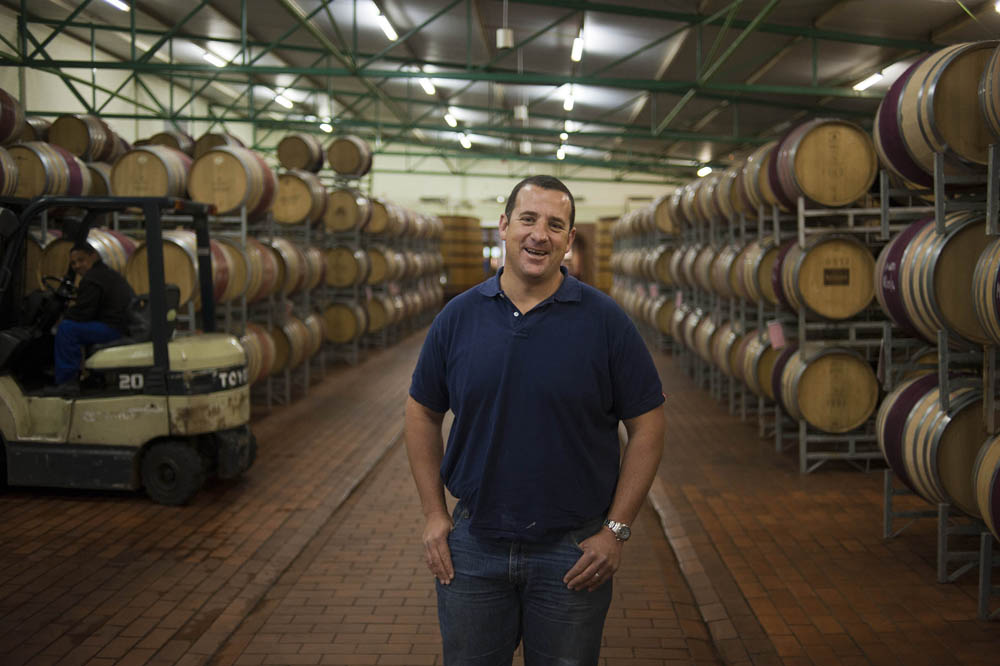Neethlingshof Estate wine farm in Stellenbosch.
Every bottle of wine has a story to tell: of the ground it grew on, the varietal of grape that went into it, the wood of the barrel that held it. In the case of South African wines, it is also the story of how the fall of apartheid revitalised the industry and the science that underpins it.
“Before the lifting of sanctions [in the early 1990s], wine exports were almost nonexistent,” says Professor Florian Bauer, the former director of Stellenbosch University’s Institute for Wine Biotechnology. “The industry as a whole was in maintenance mode, without much investment in research or science.”
This led to a loss of skills, particularly the scientific skills “to drive quality production”.
“Some estates under apartheid had maintained a focus on quality, but the majority had high-yielding crops, rather than quality
,” says Bauer, who is also the South African research chair for integrated wine science at the university.
The situation is very different today. The International Organisation of Wine and Vine says that South Africa produces 4% of the world’s total wine production, ranking as the ninth-largest producer.
In 2013, local wine producers made about R3.8-billion, according to South African Wine Industry Statistics.
Wine science lab
Hanlie Smith, founder of a wine science laboratory in Stellenbosch, says, “because of apartheid, we were excluded … winemakers didn’t travel … [but] after 1994, we all started travelling … [and] brought back new analysis [techniques]” and different varietals and ways of making wine.
De Wet Viljoen, the cellar master at Neethlingshof Estate in Stellenbosch, says South Africa had produced good wines during the apartheid era, but the end of its international isolation “allowed the exchange and dissemination of information and science between countries”.
Viljoen, who has degrees in microbiology and viticulture, says science informs every stage of winemaking. “It’s science from the start. It’s very expensive to establish a vineyard, about R180 000 to R200 000 a hectare.”
First, the soil has to be analysed for its nutrient content. That, and the terroir, which relates to an area’s microclimate and geography, interact with the plant’s genetics and determine the varietal of grape that can be planted, among other things.
Grapevine roots can extend more than a metre, so soil conditions have to be just right all along the root system. Only then are the vines planted.
“It isn’t easy,” says Bauer, “but we try to understand scientifically what happens in this complex biological system … [winemaking] is about controlling biological systems and making them do the things you want them to do.”
Barrel lifespan
Four years later, the grapes are harvested, analysed and juiced in the cellar, says Viljoen. “Then, once again, you’ve got to establish the right conditions – nutrients, pH, etcetera – before putting the juice into the barrel, otherwise your yeast will struggle [to facilitate a smooth fermentation].”
A barrel can cost up to R12 000, and has a lifespan of about four years and six “fills”, so “you have to put the right wine in the right barrel. You can’t just waste a barrel,” Viljoen says.

De Wet Viljoen, cellar master at the Neethlingshof Estate in Stellenbosch, says science informs every stage of of the winemaking process, from soil analysis to selecting the best barrels. (David Harrison, M&G)
Gerard Martin, executive manager of the industry-supported WineTech organisation, which co-ordinates scientific research in the wine industry, says there has been a marked increase in the demand for wine science.
WineTech imposes a levy of 2.43c on every litre of wine produced in the country. In 2013, this amounted to more than R25-million and funded a total of 21 postgraduate students. The research includes “a wide range of things, from yeasts [which convert the sugar in the grape juice into alcohol] to [wine-making] methods, analytics and microbiology”, says Martin.
This need for concrete data has also given rise to a number of independent wine laboratories in the Stellenbosch area.
Busy business
Smith founded one such laboratory, VinLab, 13 years ago: “We do the full spectrum, from routine analysis to … mass spectroscopy [a chemistry technique in which the abundance of certain atoms or molecules in a sample can be determined].”
Asked whether the laboratory is busy, Smith laughs. “It’s the same as a blood laboratory; we’re busy. The winemaker can’t make decisions unless he has numbers. If we don’t quantify [what’s in the wine], then the winemaker has to work on taste and it’s subjective,” she says.
But winemakers still focus on what appeals to people. “It is important for us to understand consumer reaction. It’s become a big field now,” says Bauer. “In South Africa, the focus is more on sensory science: why and how people perceive wine in a specific way.”
This is done through trained tasting panels. Asked what constitutes a trained panel, he explains: “It’s a complex process because you have to align individual perceptions within those panels. Take the taste of raspberry. Ask a dozen people, and some will agree that it is raspberry, [but] others don’t think so.”
‘Living entity’
Asked what his favourite wine is, Viljoen laughs: a pinotage (an exclusively local wine type). That is not surprising because he is also the vice-chairman of the Pinotage Association. “I try to make wine with personality, with a sense of place, so that when people drink a pinotage, they taste a bit of South Africa,” he says.
Wine is different from other alcoholic drinks, he says. “Wine is a living entity, a mood adaptor. You can drink beer or spirits, and there is a constant quality to them. Wine is a product that enhances the mood you’re already in.”
“At every stage, you monitor what goes on [in the wine-making process]. You nurture it all the way, and then you hope and pray,” Viljoen says. “The beauty of wine is that we do understand the science, but there is always a grey area where things can go wrong.”